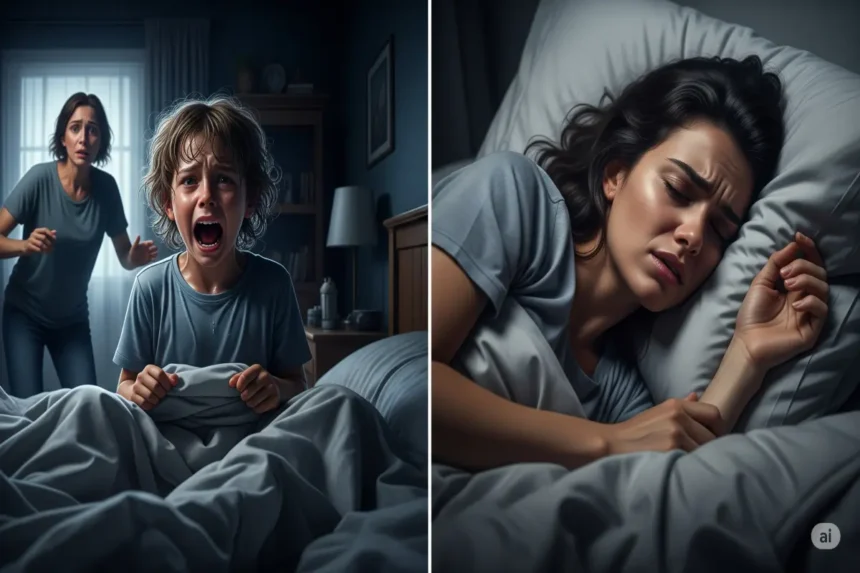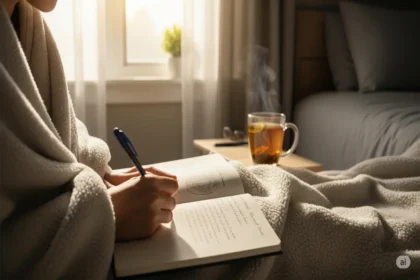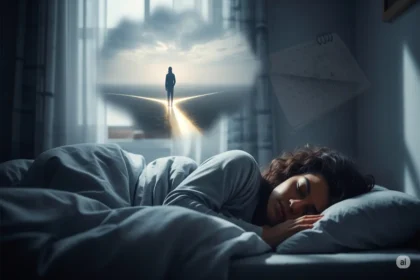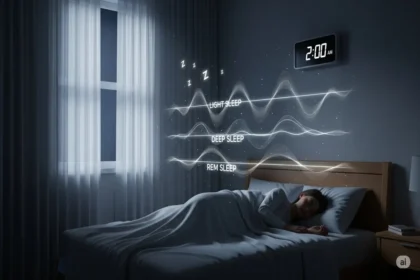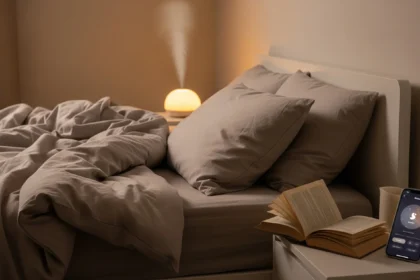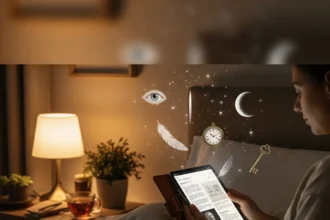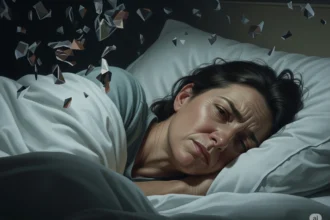The nocturnal landscape of our minds is a realm of both wonder and occasional terror. Most of us are familiar with the unsettling jolt of a nightmare, waking with a racing heart and a vivid, disturbing memory. But there’s another, often more dramatic and perplexing, nocturnal event that can leave both the sleeper and any observer deeply shaken: the night terror. Understanding the distinction between Night Terrors vs. Nightmares is crucial, not just for scientific clarity, but for providing appropriate comfort and seeking effective solutions for those who experience these frightening nighttime phenomena. While both involve intense fear during sleep, their origins, manifestations, and the way we respond to them are fundamentally different, rooted in the intricate architecture of our sleeping brains.
Imagine a parent, awakened by a bloodcurdling scream from their child’s room. They rush in to find their child sitting bolt upright, eyes wide open but unfocused, thrashing, crying, and seemingly terrified, yet utterly unresponsive to their comforting words. Moments later, the child settles back into sleep, waking in the morning with no memory of the terrifying episode. This is a classic night terror. Now, picture an adult waking suddenly, heart pounding, from a dream of being chased by a monster. They remember every terrifying detail, the fear lingering long after they’re fully awake. This is a nightmare. These two scenarios, though both involving fear, illustrate the core differences that often confuse and distress families.
The Landscape of Sleep: Where Fear Takes Hold
To truly grasp the distinction between nightmares and night terrors, we must first journey into the fundamental stages of sleep. Our night’s rest is not a uniform state but a dynamic cycle, typically lasting around 90 minutes, alternating between two primary phases:
- Non-Rapid Eye Movement (NREM) Sleep: This phase is divided into three stages, progressing from light sleep (N1) to deeper sleep (N2), and finally, the most profound and restorative stage, Slow-Wave Sleep (SWS) or N3. During SWS, brain activity slows significantly, and it’s crucial for physical restoration, hormone release, and the consolidation of declarative memories (facts, events).
- Rapid Eye Movement (REM) Sleep: This is the stage where most vivid dreaming occurs. Characterized by rapid eye movements, increased brain activity (similar to wakefulness), and atonia – a temporary paralysis of voluntary muscles that prevents us from physically acting out our dreams. REM sleep is vital for emotional processing, problem-solving, and consolidating procedural memories (skills).
The crucial difference between nightmares and night terrors lies in which of these sleep stages they emerge from.
Nightmares: The Frightening Dream
Nightmares are vivid, realistic, and often disturbing dreams that typically occur during REM sleep. They are characterized by strong negative emotions, such as fear, anxiety, sadness, or anger, and often involve threats to survival or security.
Characteristics of Nightmares:
- Timing: Nightmares are most common during the latter half of the night, when REM sleep periods become longer and more intense.
- Memory: Upon waking, individuals usually have a clear and detailed memory of the dream’s content. The narrative is coherent, even if terrifying.
- Consciousness: The person typically wakes up fully from the nightmare, often with a racing heart, sweating, and lingering fear. They are immediately oriented to their surroundings.
- Physiological Response: While there’s an emotional and physiological response (increased heart rate, sweating), it’s generally less extreme than a night terror.
- Emotional Processing: Nightmares are thought to be a way for the brain to process difficult emotions, stressful experiences, or traumatic events from waking life. They can be a reflection of underlying anxiety or unresolved issues.
Common Triggers: Stress, anxiety, trauma (leading to PTSD nightmares), certain medications (e.g., antidepressants, blood pressure drugs), illness, fever, sleep deprivation, and even late-night heavy meals can increase the frequency and intensity of nightmares. For instance, a person experiencing significant work stress might repeatedly dream of being unprepared for a presentation or missing an important deadline, reflecting their waking anxieties.
Night Terrors: The Scream from Deep Sleep
Night terrors, also known as pavor nocturnus or sleep terrors, are far more dramatic and often terrifying for observers than for the person experiencing them. They are episodes of abrupt, partial arousal from NREM deep sleep (SWS), typically occurring in the first third of the night, usually 1-3 hours after falling asleep.
Characteristics of Night Terrors:
- Timing: Almost exclusively occur during NREM SWS, early in the sleep cycle.
- Memory: The most striking difference from nightmares is that the person typically has no memory of the event upon waking the next morning. They are not dreaming in the conventional sense.
- Consciousness: The individual is not truly awake and is unresponsive to comfort or attempts to wake them. Their eyes may be open, but they have a glazed, vacant stare.
- Physiological Response: The physiological response is extreme. The person might sit bolt upright, scream, thrash, kick, punch, or run around the room. Their heart rate will be very rapid, breathing heavy, pupils dilated, and they may be sweating profusely. They appear terrified, but they are not consciously aware of their fear or surroundings.
- Difficulty Waking: It is very difficult to fully wake someone experiencing a night terror. Attempts to do so can sometimes prolong the episode or make the person more agitated.
- Brief Duration: Episodes usually last from a few seconds to a few minutes, after which the person typically lies back down and returns to deep sleep, often without interruption.
Common Triggers: Night terrors are more common in children (affecting up to 6% of children, usually between ages 3 and 12) but can occur in adults (affecting about 1-2%). Triggers include sleep deprivation, irregular sleep schedules, fever, stress, anxiety, certain medications, and other sleep disorders like sleep apnea. A child who has been over-tired from a busy day or is experiencing a growth spurt might be more prone to night terrors. They are also believed to have a genetic component, often running in families.
Key Differences at a Glance: A Comparative View
To summarize the core distinctions:
| Feature | Nightmare | Night Terror |
| Sleep Stage | REM sleep | NREM deep sleep (SWS/N3) |
| Timing | Latter half of the night | First third of the night |
| Memory | Clear recall of dream content | No memory of the event (or very fragmented) |
| Consciousness | Wakes up fully, oriented | Not truly awake, unresponsive to comfort |
| Physiological | Moderate physiological arousal | Extreme physiological arousal (screaming, thrashing) |
| Emotional State | Conscious fear, dread | Appears terrified, but not consciously aware |
| Interaction | Can be comforted and woken | Difficult to wake or comfort |
| Typical Age | All ages | More common in children (3-12 years old) |
Who is Affected and Why?
While nightmares are a universal human experience, night terrors have a stronger genetic predisposition and are more common in childhood. Both can be exacerbated by factors that disrupt sleep architecture or increase physiological arousal.
- Genetics: Both nightmares and night terrors can run in families, suggesting a genetic link.
- Sleep Deprivation: Not getting enough sleep is a major trigger for both. An overtired brain struggles to transition smoothly between sleep stages, increasing the likelihood of these phenomena.
- Stress and Anxiety: High levels of stress, anxiety, and emotional distress can contribute to both. For nightmares, it’s about the brain processing difficult emotions. For night terrors, it’s about the heightened arousal making the brain more prone to partial awakenings from deep sleep.
- Fever and Illness: These can disrupt normal sleep patterns and trigger episodes.
- Certain Medications: Some drugs, particularly those affecting neurotransmitters, can influence sleep stages and increase the risk of both.
- Underlying Sleep Disorders: Conditions like sleep apnea, which cause fragmented sleep, can increase the likelihood of night terrors.
How to Cope and When to Seek Help
Understanding the distinction is the first step towards effective coping strategies.
For Nightmares:
- Improve Sleep Hygiene: Ensure a consistent sleep schedule, a dark/quiet/cool bedroom, and a relaxing wind-down routine.
- Stress Management: Practice relaxation techniques like deep breathing, meditation, yoga, or journaling to manage daytime stress.
- Address Triggers: Avoid heavy meals, caffeine, and alcohol close to bedtime.
- Journaling: Writing down your nightmares or exploring their themes can sometimes help process underlying emotions.
- Imagery Rehearsal Therapy (IRT): For recurrent, distressing nightmares (especially in PTSD), IRT is a cognitive behavioral therapy technique where the individual re-writes the nightmare with a positive ending and rehearses it mentally while awake. This can reduce the emotional intensity and frequency of the nightmare.
- Professional Help: If nightmares are frequent, severe, or significantly impacting your daily life or mental health, consult a doctor or a sleep specialist. They can assess for underlying conditions or recommend therapy.
For Night Terrors:
- Do NOT Try to Wake Them: The most important rule. Trying to wake someone during a night terror can prolong the episode, make them more agitated, or even cause them to lash out.
- Ensure Safety: Gently guide the person away from potential hazards (stairs, sharp objects). Clear the sleep environment of anything they could trip over or injure themselves on.
- Gentle Reassurance (Verbal Only): Speak in a calm, soothing voice. Do not touch or shake them. They are not consciously aware of your presence.
- Prioritize Sleep: Ensure the individual is getting enough sleep and maintaining a consistent sleep schedule. Sleep deprivation is a major trigger.
- Reduce Stress: Address any sources of stress or anxiety in their waking life.
- Scheduled Awakenings (for children): If night terrors occur at a predictable time, gently wake the child 15-30 minutes before the usual onset of the terror. Keep them awake for a few minutes, then let them fall back asleep. This can disrupt the deep sleep cycle that triggers the terror.
- Professional Help: While usually outgrown, if night terrors are frequent, severe, causing injury, or significantly disrupting family life, consult a pediatrician or sleep specialist. They can rule out other underlying conditions (like sleep apnea) and offer guidance.
Conclusion: Demystifying the Night’s Mysteries
The world of sleep is a complex and often mysterious one, and the phenomena of night terrors and nightmares stand as powerful reminders of its intricate nature. While both can be deeply unsettling, understanding their distinct origins in our sleep architecture empowers us to respond effectively. Nightmares are the brain’s way of processing our waking fears and emotions, while night terrors are a dramatic, unconscious physiological response emerging from the deepest stages of rest.
By demystifying these nighttime experiences, we not only alleviate the fear and confusion they can cause but also gain a deeper appreciation for the delicate balance of our sleeping minds. Whether it’s comforting a child through a terror or seeking strategies to quell our own recurring nightmares, knowledge is the key to transforming these frightening encounters into manageable aspects of our sleep journey. Ultimately, understanding the night allows us to reclaim our peace, ensuring that sleep remains a source of restoration, not dread.
Disclaimer: The information provided in this article is for general informational purposes only and does not constitute medical advice. It is not a substitute for professional medical advice, diagnosis, or treatment. Always seek the advice of your physician or other qualified health provider with any questions you may have regarding a medical condition. Never disregard professional medical advice or delay in seeking it because of something you have read on this website.

